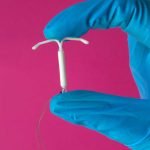Is cervical screening important? Let’s face it, it’s not the most exciting thing, but it is important! Cervical screening is something people put off and nearly 1/3 of those eligible do not attend screening. Although it is a few moments of feeling uncomfortable, it may just save your life. Is it as bad as you think or remember? The more of us that talk about it the more women we can encourage to attend. So I am going to share my experiences of what a cervical screening test feels like. Please note the information in this article does not replace medical information, and the most reliable and up-to-date information can be found on the NHS website. This article does make reference to medical procedures and cancer so you may not want to read on if any of this is triggering for you.
Why is cervical screening important?
A cervical screening test helps detect any changes in your cervix that could lead to cancer. The cervix is at the top of the vagina, and is the lowest part of the womb. It is not a test for cancer, it is designed to find changes before they potentially develop into cancer. Any person with a cervix who is sexually active could be at risk. You will generally be invited for screening between the ages of 25 and 64. If these abnormal cells are left without monitoring or treatment then they can lead to cervical cancer.
Who should be invited for a cervical screening test?
As mentioned previously anyone with a cervix between the ages of 25 and 64 should be invited for cervical screening tests. The frequency of these will depend on your age. There is still a risk of developing cervical cancer if:
- You have had the HPV vaccine
- You are lesbian or bisexual
- You are a transgender man with a cervix
- You have had a partial hysterectomy
What is HPV?
HPV is the Human Papillomavirus, it is a group of common viruses. There are various strains of it and not all of them are harmful. Most people will have HPV at some point during their lives. It is usually passed via sexual contact. Most people are unaware they have it as it causes no symptoms. These cells containing HPV can lead to genital warts, in some situations it can lead to cancer. These include cervical cancer, anal cancer and some types of head and neck cancer.
There is no treatment for HPV, and usually your body clears it within a couple of years.
What happens during cervical screening?
A cervical screen will usually take place at your G.P’s, and is usually performed by a female member of staff. You can request this if it would make you feel more comfortable. Once in the consultation room you will be asked to undress from the waist down behind a curtain and then lie down on your back on the couch. You will be given some paper towel to cover yourself with.
The nurse will ask you to get into a position where they can access your cervix. This is usually lying on your back, legs bent with your feet together and your legs out to the side. Almost like a frog. Sometimes you will be asked to ball your fists and place them under your bottom.
Once in position the nurse will insert a speculum, this is a tube shaped device. They will use a lubricant to help get it into place. The speculum will be opened slowly allowing the nurse to see your cervix. They will usually angle a light to help see. Using a soft brush they will take a sample of the cells of your cervix. The nurse will then remove the speculum and you will be able to get redressed.
What does cervical screening feel like?
I have experienced a few cervical screening tests over the years. All but one have been a positive experience. The one negative experience I had was when a doctor completed the screening test, from then on I always ask for a nurse when booking. In my experience a cervical smear does feel uncomfortable but it is not painful. It can feel awkward, and you may be trying to make small talk. Remember, the nurse will have performed many cervical smears in their career and will perform many more, for them it is a routine task. They know it is an uncomfortable situation and so they will be trying to put your mind at ease.
The lubricant gel can feel cold when they place the speculum in place. I felt almost like a light pressure when the sample was being taken, again I wouldn’t say it’s painful. It is just an uncomfortable sensation. Afterwards you may feel the lubricant coming out, and you may experience spotting, so it’s always best to wear a pad afterwards.

To shave or not to shave?
One of the things many worry about is whether they need to shave or not before going for a cervical smear. I can honestly say that they will have seen vagina’s of all shapes and sizes with varying amounts of pubic hair. So just do you and whatever you are comfortable with. Don’t feel you need to make a special effort and create a design, like a heart. It is important to be clean though, if you are going straight from work take some wipes to clean yourself up before you head in.
The nurse won’t be looking at what knickers you have on, but you may want to wear a skirt or dress so you can roll it up. I usually like to wear socks too, as my feet get cold lying there otherwise. It also makes me feel less naked. 🤣
After a smear test
After you have your cervical screen the sample is sent off to a laboratory. They will check the sample for HPV, if it is present they will go on to assess the cells within the sample. If no cell changes are seen they may ask for a smear test to be repeated ahead of the next scheduled one. If cell changes are seen you may be asked to have a colposcopy. This does not mean there is anything to worry about. I have had ‘abnormal’ smear tests in the past, but luckily have not required treatment.
You should receive your results within 2-6 weeks of having the screening done. If you do not receive them within this time, you need to contact your G.P practice.
Tips for cervical screening
- Take a panty liner in case you experience spotting after the test
- Wear a skirt, dress or long jumper if you want extra coverage
- Tell the nurse if you feel anxious or worried about the procedure. They can reassure you.
- Don’t forget to still keep an eye out for symptoms that may need further investigation such as abnormal bleeding, pain during sex, smelly discharge etc




